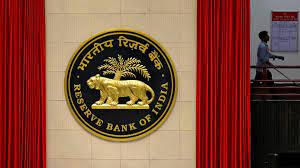
Fearing that such a measure has the potential to sharply reduce credit flow to MSMEs and self-employed sections of the public, FIDC has requested that the measure regarding risk weight to bank loans to NBFCs be rescinded.
The increasingly ambitious Indian public is shedding its historic inhibitions, now more than ever, towards availing consumer credit to fuel its lifestyle aspirations. The lending institutions have responded accordingly to meet this surge in credit demand. Nonetheless, RBI, vigilant about potential stress stemming from unanticipated corners, has viewed this trend suspiciously. RBI Governor Shaktikanta Das, in his statement dated October 6, 2023, called for alert risk management and robust underwriting standards regarding certain components of personal loans.
Following this statement, the RBI issued a circular on November 16, 2023, which prescribed an increase in risk weights applicable to existing and new consumer credit from 100% to 125%. Additionally, the risk weights on exposure by scheduled commercial banks to NBFCs, with a few exceptions, stand increased by 25 percentage points. The circular further requires regulated entities to review and amend/prescribe sectoral limits of exposure to various sectors of consumer credit, particularly unsecured consumer credit. The strictures regarding the increased risk weights are applicable immediately and those regarding the sectoral limits need necessary action by February 29, 2024.
The straightforward implication of the increased risk weights is that given a particular amount of capital, the NBFCs would need to limit their consumer credit portfolio. Further, the circular could necessitate increased capital requirements for the NBFCs and quite possibly, lead to an increase in the cost of capital to fund the consumer credit portfolio of the NBFCs.
These fears have been communicated by the Finance Industry Development Council (FIDC), a representative body of NBFCs, to the Reserve Bank of India, though the FIDC has, otherwise welcomed the move of imposing greater risk weights on consumer loans. Fearing that such a measure has the potential to sharply reduce credit flow to MSMEs and self-employed sections of the public, FIDC has requested that the measure regarding risk weight to bank loans to NBFCs be rescinded.
The key driver of the circular is RBI’s unease with “consumer credit”. While the circular has not clearly defined the term, we could draw guidance from the RBI’s circular on XBRL Returns – Harmonization of Banking Statistics dated January 4, 2018. Viewed in this light, consumer credit connotes exposure to an individual and consists of consumer durable loans, credit card receivables, auto loans, loans against gold, immovable property, fixed deposits, securities, etc. and loans given for other consumption purposes.
The categories of loans not included within “consumer credit” are education loans, loans for the acquisition of immovable property, consumption loans given to farmers under Kisan Credit Card Scheme and loans given for investment in financial assets. Hence, the concept of “consumer credit” is tied to the constitution of the borrower, who essentially must be an individual and to the purpose of application of the proceeds of the credit facility.